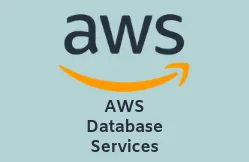AWS Network Services
Being a professional networking trainer, I always tell my student that Networking Is not just process of connecting two computers but also a process of creating and using computer networks, with respect to hardware, protocols and all kinds of software. Now days most of the companies go for cloud computing, so to adopt a cloud infrastructure strategy companies have to configure a network that meets the needs of their organization. This basic requirement is fulfilled by Amazon Web Services (AWS) which is a cost-reducing solution that provides tools which helps us to build a data center with secure cloud networking technology. AWS has introduced many networking product services which are not only to build cloud infrastructure but also to scale request handling capacity & to connect physical network with private virtual network. These networking product services work together to meet application needs
Now let’s understand about the networking product services are offered by AWS .
Amazon CloudFront: It is a Content Delivery Network (CDN) which delivers pages and other Web content to a user considering the geographic locations of the user, the source of the webpage and the content delivery server. It is a highly secure network spread globally to get content to all viewers with low latency and high transfer speeds.
Amazon VPC:As its name suggest it is a Virtual Private Cloud which has on-demand configurable pool of shared computing resources. These resources are allocated within a public cloud environment to provide a certain level of isolation between the different organizations. This gives full control over our virtual networking environment so that we select our own IP address range & we will be able to create subnets, and we are also able to do configuration of route tables and network gateways.
AWS Direct Connect: As you know a dedicated Internet line is a fixed-bandwidth connection between two points which is available 24/7 for business use. So, with AWS Direct connect the two points are replaced by network and Amazon VPC to provide a dedicated network connection. Also, we can create a private connectivity between AWS and your datacenter, office, or colocation environment, which helps in reducing network costs & to increase bandwidth. Needless to say, it provides a more consistent network experience than Internet-based connections.

Elastic Load Balancing: Most of the people don’t know that a load balancer is a device which acts as a reverse proxy to distributes network or application traffic across multiple servers. It helps to increase capacity and reliability of applications. Initially when AWS started with EC2 Classic as IaaS they used the load balancing to automatically distribute application traffic This is also used to improve the fault tolerance in applications & to provide the required amount of load balancing capacity to distribute application traffic. So, this Elastic Load balancing is certainly help applications within organizations.
Amazon Route 53: Everyone knows that domain name system (DNS) is a way to locate the internet domain names which are translated into internet protocol (IP) addresses. AWS offers a highly available and scalable cloud DNS called Amazon Route 53 which helps to connect user requests to AWS resources. It is a reliable and cost-effective way to route end users to Internet applications by translating domain names into the numeric IP addresses which is used by computers to connect with each other.
AWS Training in Bangalore from Apponix Technologies
Most Popular Courses
AWS Certification Training | Digital Marketing | Associate in AWS SysOps







